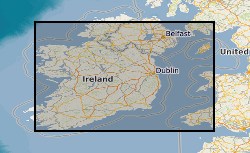Sea level
Type of resources
Topics
Keywords
Contact for the resource
Provided by
Years
Update frequencies
Resolution
-

Data relates to the NERC Urgency Grant NE/R00210X/1 which focusses on Sediment signatures of the 25 December 2016 Chile earthquake to constrain detection limits of tidal marsh records. The documentation provides an overview of findings from two field seasons to the southern coast of Isla de Chiloé, Chile, including field observations, sediment samples and surface vegetation surveys. The research locations for diatom analyses are Ayentema, Asasao, Inio and Quilanlar, southern Chiloé, Chile. Field season 1 (excluding travel dates): 2-9 August 2017 Field season 2 (excluding travel dates): 6-16 October 2017 Diatom data collection: through to 30 June 2018
-

Due to differential loading of ice on Britain and Ireland the glacial isostatic adjustment (GIA) response and therefore sea-level record will vary with distance from the centre of the British Irish Ice Sheet. GIA models are tested against geological observations, however there is a paucity of observations below -10m depth and the lateglacial period when the BIIS retreated leading to a rapid response of both sea-level and GIA. The aim of the project was to use geophysical data, ground truthed by core material, to find evidence of lateglacial sea-level minima in the Irish and Celtic Sea to refine these GIA models. Cruise log and digital copies of the core information (location, water depth, core length) taken onboard the research cruise CE12008 on the RV Celtic Explorer. A GeoReseource 6m vibrocorer was used to collect sediment samples. Cores where taken at multiple sites and from southern and eastern Ireland: Bantry Bay, Dunmanus Bay, Waterford,Offshore County Louth and Dundalk Bay, offshore Isle of Man; offshore Wales: Cardingan Bay; and offshore Northern Ireland: Kilkeel and Dundrum Bay, Belfast Lough.
-
This report is a contribution to the Strategic Environmental Assessment (SEA7) conducted by the Department of Trade and Industry (now Department of Energy and Climate Change) and describes the hydrography of the SEA7 area. SEA7 lies across the northern end of the Atlantic Meriodional Overturning Circulation and contains a number of major oceanic currents carrying surface water northward across the whole region and returning cold Artic water around the foot of some of its slopes.
-
This report is a contribution to the Strategic Environmental Assessment (SEA6) conducted by the Department of Trade and Industry (now Department of Energy and Climate Change). This report describes the physical oceanography of the Irish Sea from St George's Channel in the south to the North Channel and the Clyde Sea in the north. The report covers the topography and depth of the sea floor, the tides, the impact of storms, stratification and its consequences and the mean circulation, all with a view to mean and extreme conditions. The predominant dynamical process is the semi-diurnal tides, with areas of both high and low energy embraced. Superimposed on this is the full range of water column structure areas that are well mixed throughout the year; areas that stratify thermally in summer; areas of freshwater influence from river discharges, leading both to nearshore density gradients and stratification; frontal regions between the well-mixed and stratified regions. The movement of the water and the amount of mixing prescribe physical effects, such as forces on structures and the movement and dispersion of contaminants, but also significantly influence biogeochemical processes including sediment erosion / deposition and movement, particularly of suspended sediment, benthic exchanges and primary productivity (via stratification, nutrient exchanges and light levels).
 BGS Data Catalogue
BGS Data Catalogue